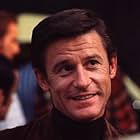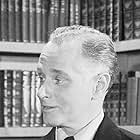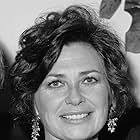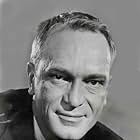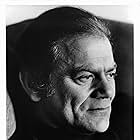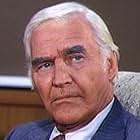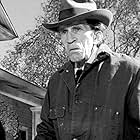Pilot
- Episode aired Nov 8, 1969
- Unrated
- 1h 38m
A seemingly haunted painting drives a greedy man insane. A rich blind woman gets a new pair of eyes that allow her to see for only one brief ironic moment. An idyllic painting gives a Nazi w... Read allA seemingly haunted painting drives a greedy man insane. A rich blind woman gets a new pair of eyes that allow her to see for only one brief ironic moment. An idyllic painting gives a Nazi war criminal in hiding some fleeting comfort.A seemingly haunted painting drives a greedy man insane. A rich blind woman gets a new pair of eyes that allow her to see for only one brief ironic moment. An idyllic painting gives a Nazi war criminal in hiding some fleeting comfort.
- Directors
- Writer
- Stars
- Man in Car (segment "Eyes")
- (uncredited)
- Directors
- Writer
- All cast & crew
- Production, box office & more at IMDbPro
Conceived by another legend, the brilliant Rod Serling, the concept of the film and subsequent series was meant to be a variation on his classic "Twilight Zone" series, varying tales of supernatural horror, each tied to a grotesque painting and each introduced by Serling, acting as the gallery's curator. It was an excellent start, though the resulting series proved to be a pale imitation of "The Twilight Zone," a peculiar hodgepodge of styles and concepts, some classics and some just plain silly.
The TV movie itself stands alone, though the trio of tales unfold in descending order. The first and best is "The Cemetery," a variation on the classic ghost story. In this southern Gothic creeper, Roddy McDowall murders his wealthy uncle, but finds that enjoying his newfound inheritance is a bit difficult since a painting on the wall seems to suggest that Uncle is buried, but not dead. The story is slight, even silly, but boy, oh boy, does Roddy know how to chew the scenery. I can think of no other actor who so obviously loved to act more than McDowall and here he plays evil to the hilt. Roddy was undoubtedly one of the most intrinsically likable stars there ever was, so much so that he could play the most despicably evil characters and still make the character a delight. "The Cemetery" is nicely written by Serling and tightly directed by Boris Segal, but it is Roddy's one-man show.
But if Roddy McDowall could make loathsome characters inexplicably likable, than Joan Crawford had the knack for negating any trace of sympathy that her characters might possess. In Spielberg's "Eyes," Joan plays a ruthless millionairess who happens to be blind, but has the chance to briefly see again by buying the eyes of a living person who is in desperate need of money. It is a nice performance; hard and demanding, Crawford never asks for pity, but nevertheless earns it with the story's nifty twist ending. More a clever idea than a solid story, the tale is not particularly suspenseful; bit it does displays a cool sense of cynical irony. And never is it apparent that it is Spielberg's first crack at professional film-making, so sure is his use of the camera and setting of mood.
The third tale of the trilogy, "Escape Route," is probably the most like the classic "Twilight Zone," dark and brooding; yet least successful as a thriller. Richard Kiley is a war criminal who thinks he can escape his past by literally throwing himself into art. Rod Serling has other ideas. As the trilogy's closing act, I guess it was suppose to be the one with the most impact, the one to show off Serling's penchant for moralizing. It doesn't quite come off. I think part of the problem is that Kiley, a good actor, lacks a powerful screen presence. The best episodes of "Night Gallery," and for that matter "The Twilight Zone," featured actors with strong personalities who were not only talented, but adept at pushing their performances to the edge, flirting with going over the top, just as McDowall and Crawford do. Any short form fiction, be it on the page or on the screen, needs that heightened sense of drama, that admission that reality has been left behind.
Though it had some strong episodes at first, the "Night Gallery" TV series fell out of Serling's control and eventually became sort of a ghost story version of "Love, American Style," a crude mix of cheap jokes and heavy-handed suspense. It's a pity that it didn't stay true to this pilot; it could have been another "Twilight Zone."
Storyline
Did you know
- TriviaThe "Eyes" segment was Steven Spielberg's professional debut as a director. This was quite an auspicious beginning, considering that he was to direct screen legend Joan Crawford, winner of an Academy Award who had been acting in films since 1925.
- GoofsAt the beginning of the Joan Crawford segment, we're told that Miss Menlo lives on Fifth Avenue. But the opening shot is on Park Avenue, not Fifth.
- Quotes
SS-Gruppenführer Helmut Arndt: Please! If there is a god, let him show himself now! Get me into the picture! I must get into the picture! Please, please! God, Christ, anyone! Get me into the picture! I must get into the picture!
- ConnectionsFeatured in The Siskel & Ebert Interviews (1996)
- SoundtracksCielito Lindo
Music by Quirino Mendoza
Details
Contribute to this page





